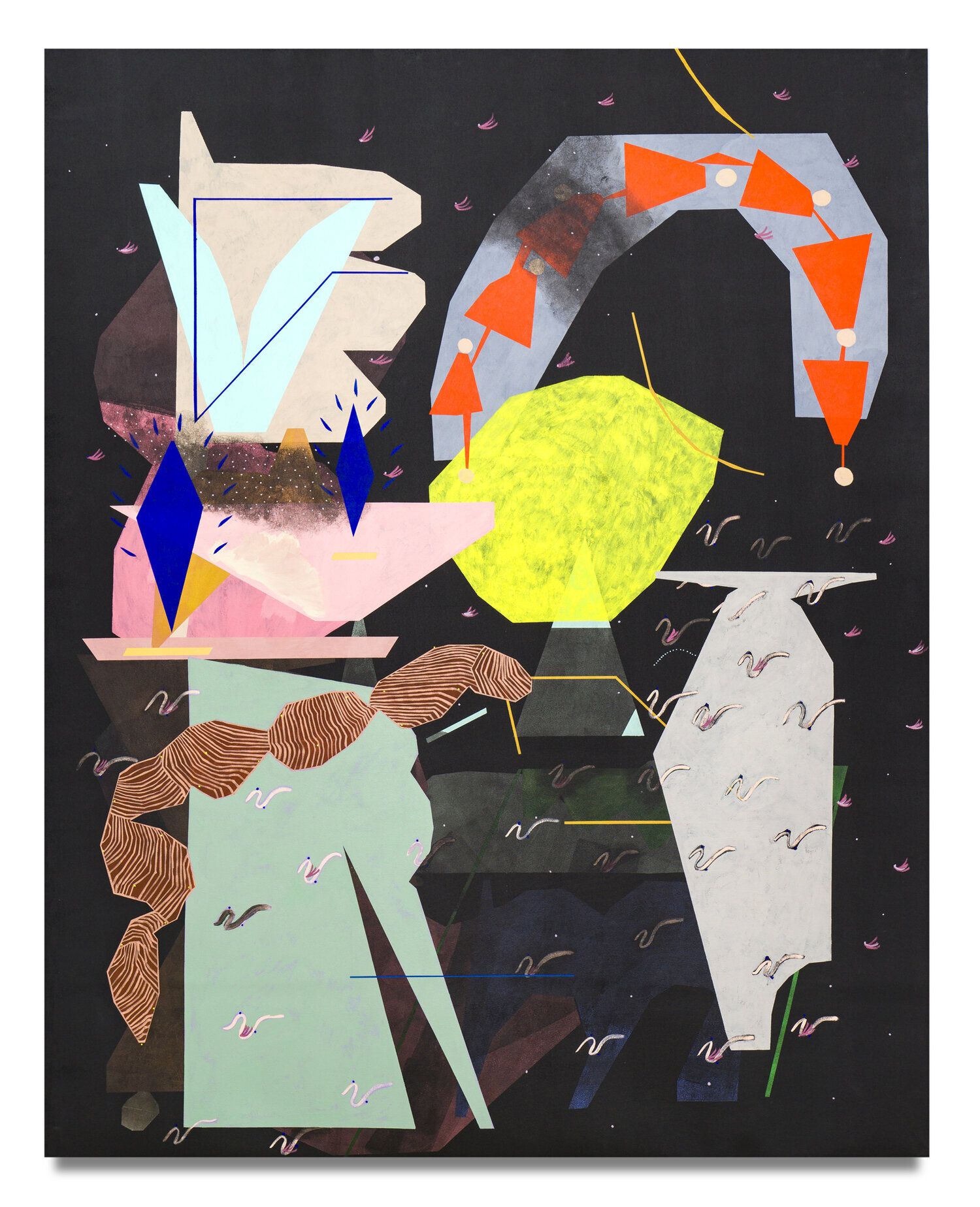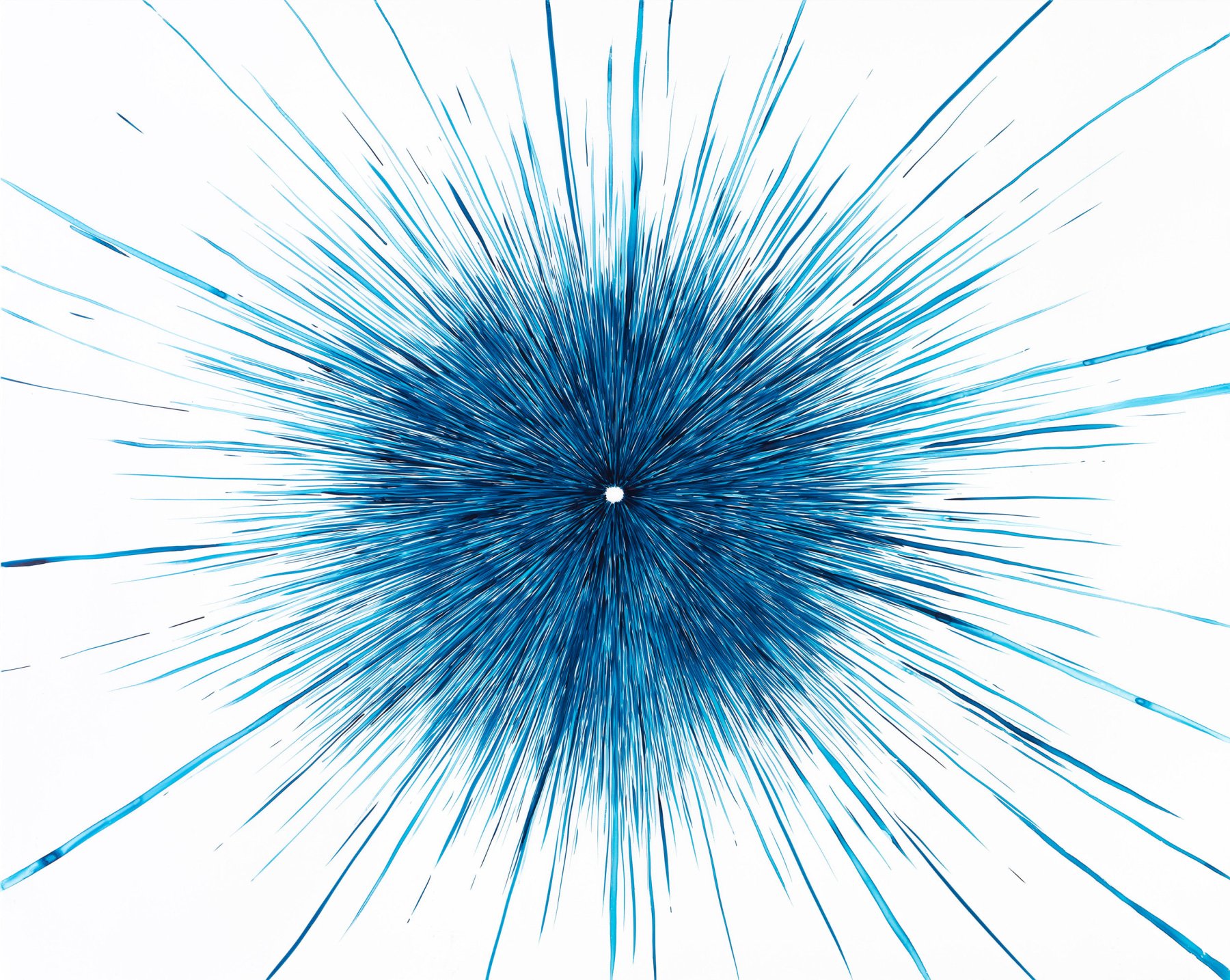Lia Halloran “The Sun Burns My Eyes Like Moons”

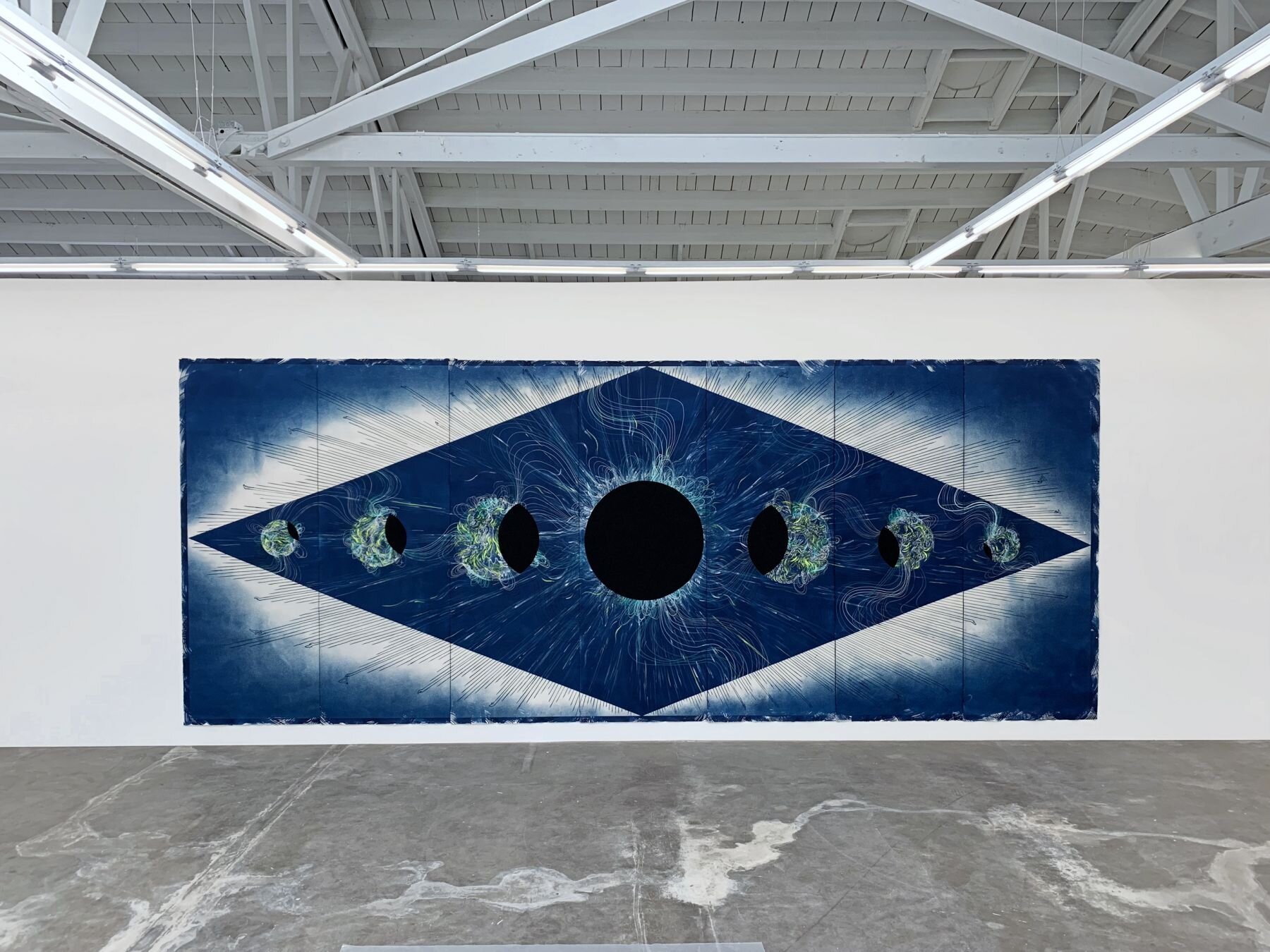

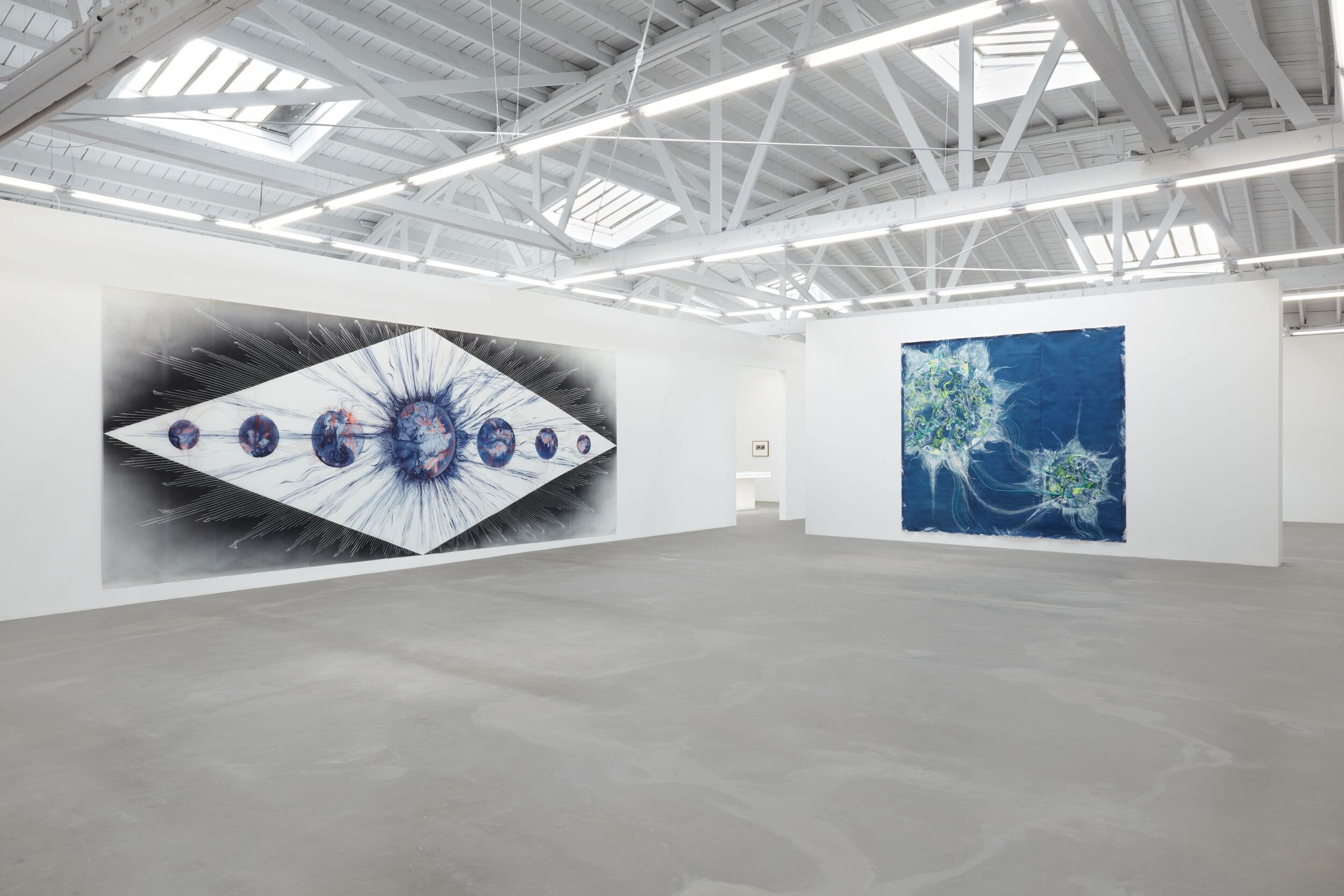


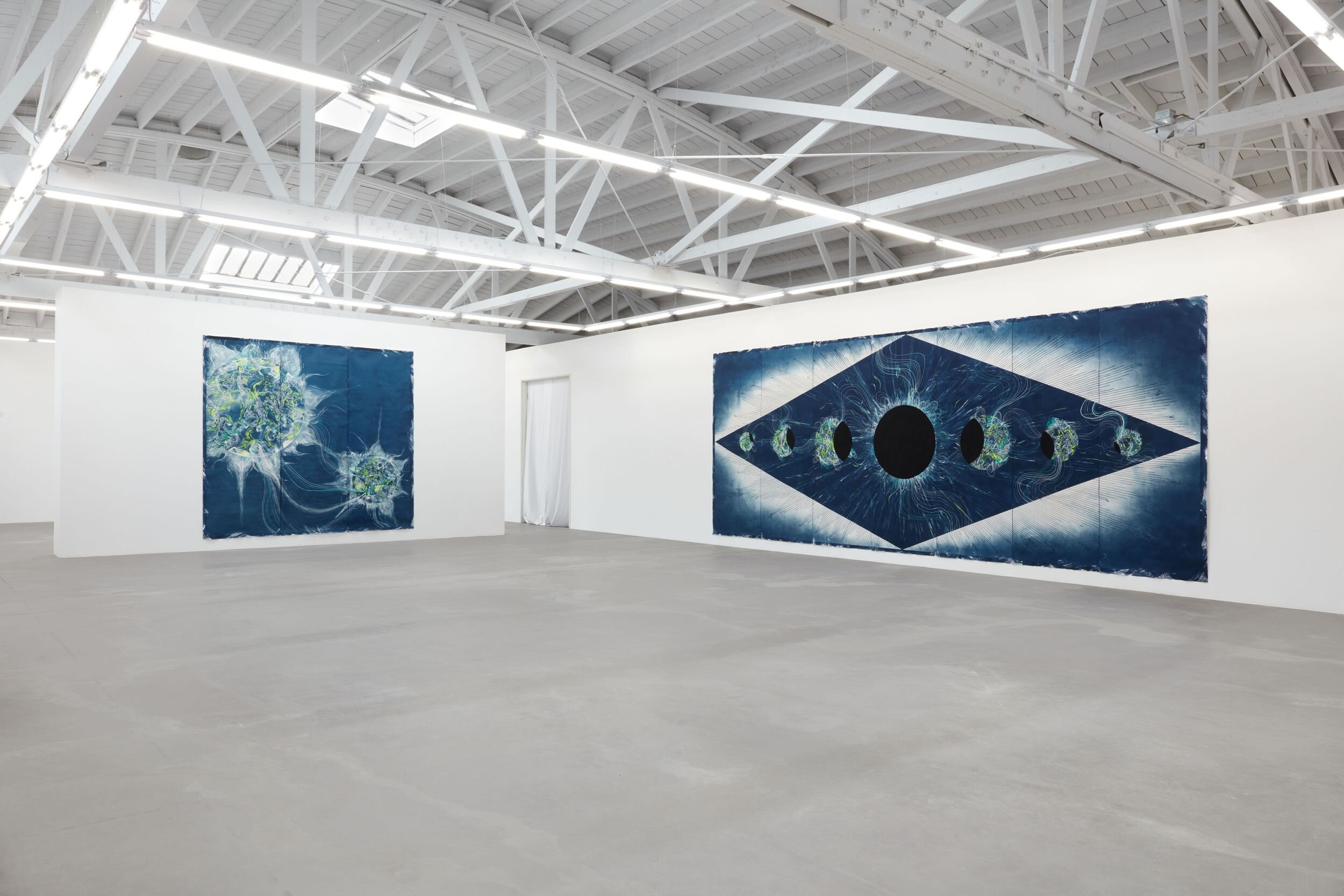

Comprised of large-scale cyanotypes and their painted negatives, Halloran’s latest body of work is an homage to the sun. With a history of integrating scientific concepts into her studio practice, Halloran developed these new works over the past year when she was awarded the City of Los Angeles Visual Artist Fellowship, and follows her research of solar eclipse expeditions, ancient Egyptian temple reliefs, and most significantly, the archives of Mount Wilson Observatory in Los Angeles. Within the four large cyanotype-painted hybrid works, the artist incorporated contemporary satellite imagery of the sun, photographs she took during a total solar eclipse in 2017, and turn of the century solar images taken by George Ellery Hale, founder of Mt. Wilson Observatory and inventor of the solar telescope.
Halloran aims to capture the sublime mythology of solar eclipses which have fascinated human beings for centuries and inspired a lineage of study. Unlike other cosmic phenomena, a solar eclipse does not require any equipment or advanced technology to observe, making it universally accessible to all. Halloran was initially drawn to this project after learning that this accessibility enabled women of the late 19th century to participate in solar expeditions, granting them freedom to travel to various parts of the world in an era when women were largely restricted. With this body of work, Halloran celebrates the legacy of these women and their contributions to science.
Although the sun is a familiar entity, many of its physical components are imperceptible to the eye, except during a total solar eclipse. As American writer Mabel Lewis Todd once wrote after such an event, “Then out upon the darkness, grewsome but sublime, flashes the glory of the incomparable corona, a silvery, soft, unearthly light, with radiant streamers, stretching at times millions of uncomprehend miles into space, while the rosy, flaming protuberances skirt the black rim of the Moon in ethereal splendor. It becomes curiously cold, dew frequently forms, and the chill is perhaps mental as well as physical.” Halloran drew on academia and personal experience to convey this terrifying, yet sublime cosmic phenomenon to the viewer.
Halloran specifically used cyanotype as a foundation for the works, invented by astronomer Sir John Herschel, in a nod to the early study of the heavens and transition from drawing to photography. The very practice of cyanotypes, produced through exposure to the sun, is a testament to the impressiveness of the sun’s sheer power. Each cyanotype panel was printed independently by placing a painting done on a translucent piece of paper and acting as a negative under the natural rays of the sun in order to obtain its cyanotype positive. Halloran then accentuated the imprinted image with rich colors that sweep across the paper, channeling the dynamism of its subject. Immense in size and saturated with blues, blacks, and pops of color, the resulting paintings evoke the overwhelming grandeur and luminosity of the sun.
Press release and images via Luis de Jesus Gallery, LA.

